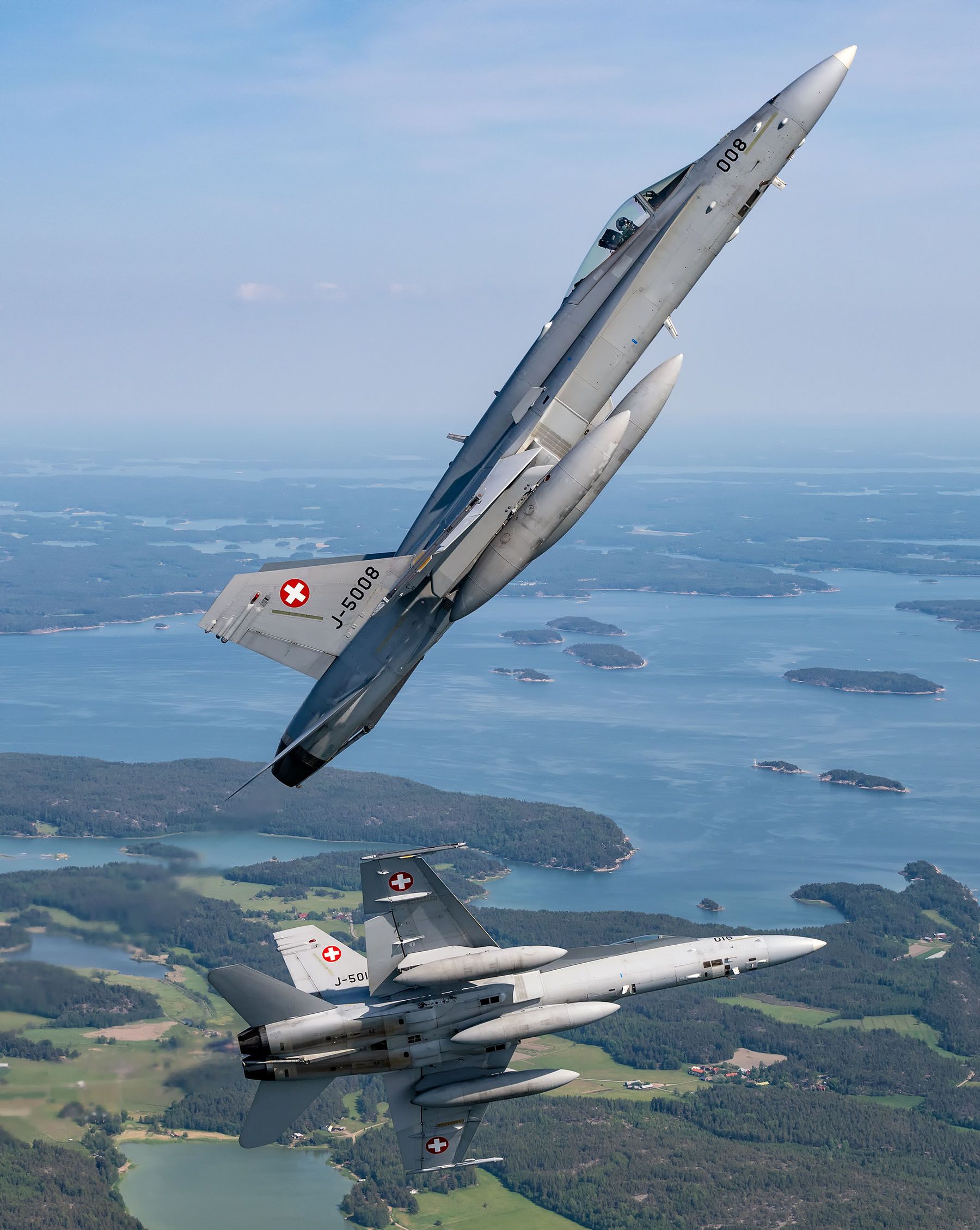The Swiss Air Force is completing a Service Life Extension Programme for their F/A-18 Hornet fleet, to bridge the gap until the F-35s arrive.
Text and photos: Emiel Sloot
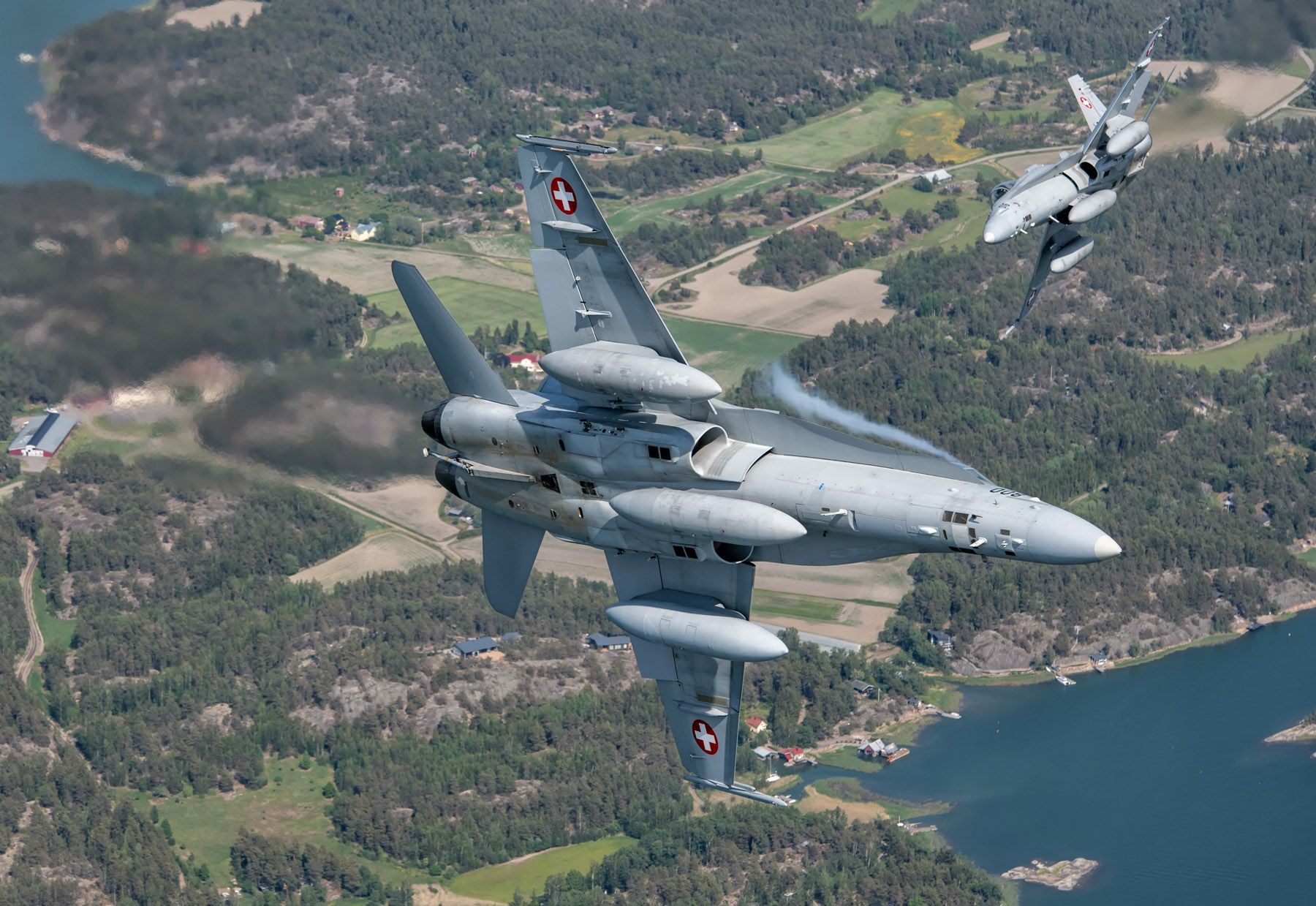
Some time ago, we already reported on the Hornets of the Swiss Air Force covering their operations and the latest upgrades. Time for another look at these aircraft: what happened since?
A brief summary: between October 1996 until late 1999, the Schweizer Luftwaffe took delivery of 26 F/A-18C Hornets and 8 dual -seat F/A-18D variants. Service entry started with Escadrille d’Aviation 17 (Fighter Squadron 17) at Payerne from June 1997, replacing their Dassault Mirage IIIS. Thereafter, Fliegerstaffel 18 received Hornets in Spring 1998, operating out of Payerne but would relocate to Sion in wartime. Third and final fighter squadron to convert was Fliegerstaffel 11 at Dübendorf in 1999. Both Fl St 18 and 11 operated Northrop F-5E Tiger IIs before that.
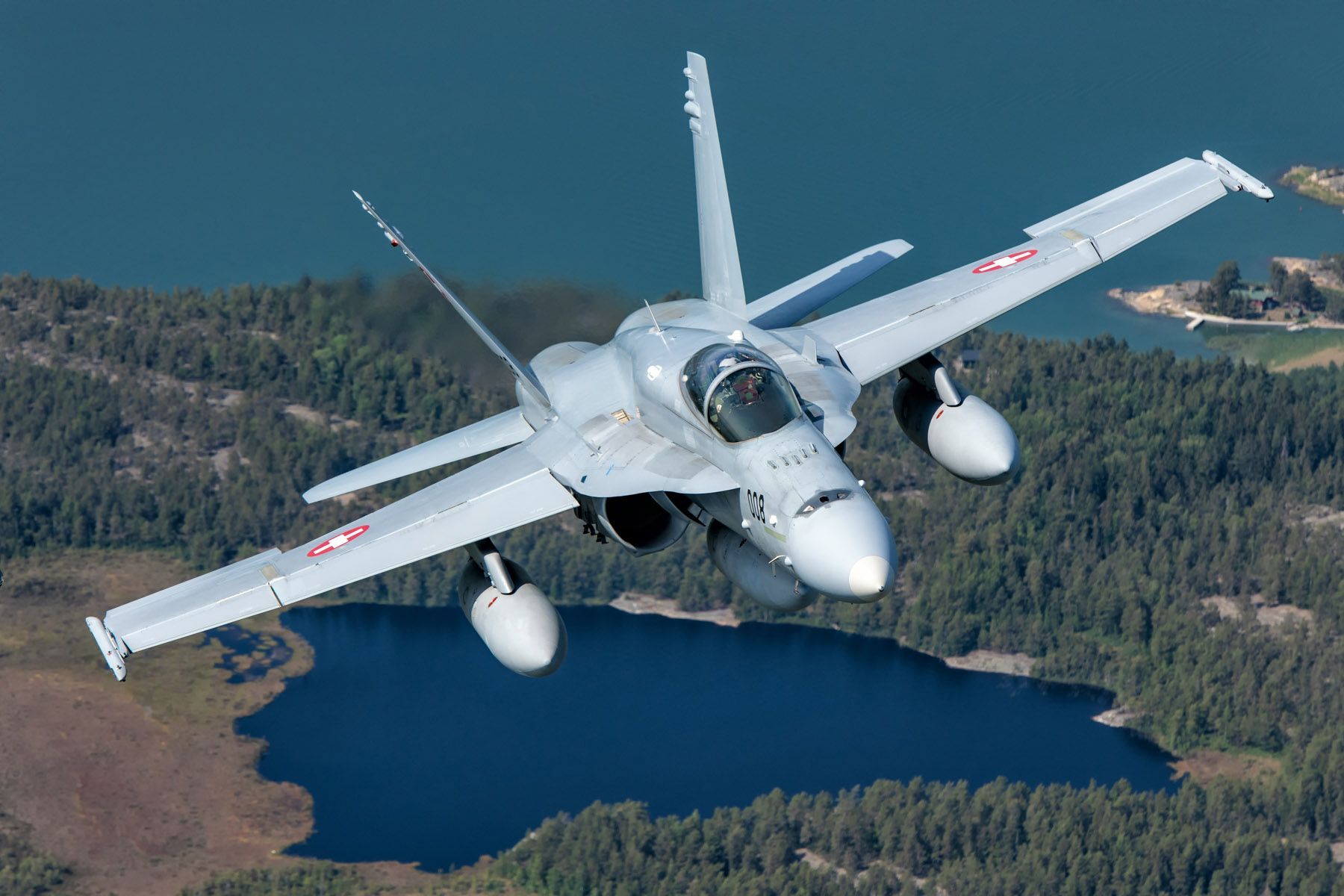
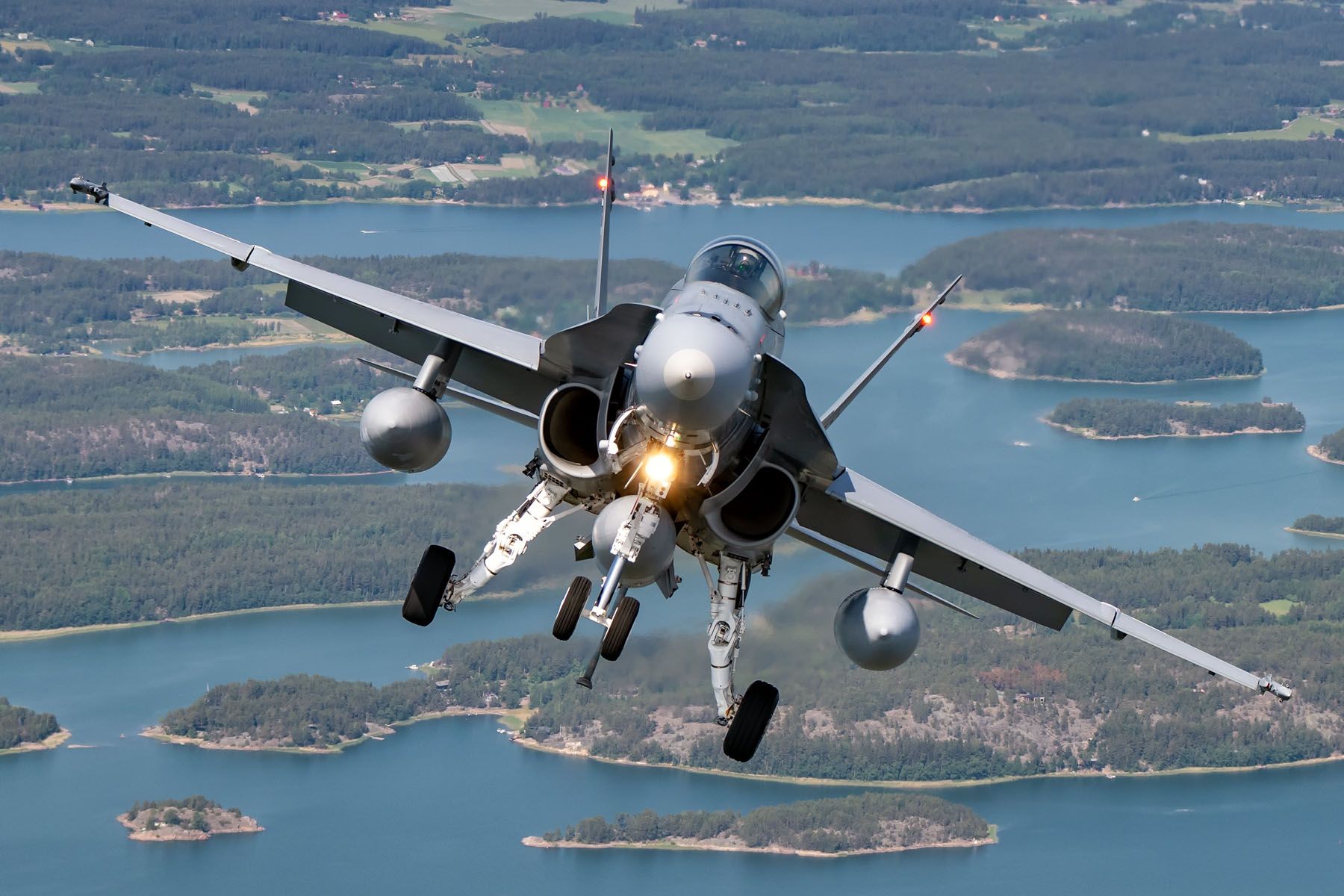
Upgrade 25
The article concluded with some details on the Upgrade 21 programme. This programme was approved in two phases in 2001 and 2003, and included the introduction of a Joint Helmet Mounted Cueing Sight (JHMCS) enabling the AIM-9X Sidewinder, of which two can be carried. Also, Link 16 datalink was added to the aircraft.
Late 2012, Upgrade 25 was ordered for the Hornet fleet. This modification programme included the Raytheon ASQ-228 Advanced Targeting Forward Looking Infrared (ATFLIR) pod, that can locate and designate targets during both day and night, at ranges up to 40 nautical miles and altitudes over 50,000 feet. Not only is it able to track the targets, but it can also GPS-locate it for other parties involved in the interception.
Another new system added was the Raytheon AN/ALR-67v3 Radar Warning Receiver, interfaced with the aircraft’s radar and electronic warfare systems.
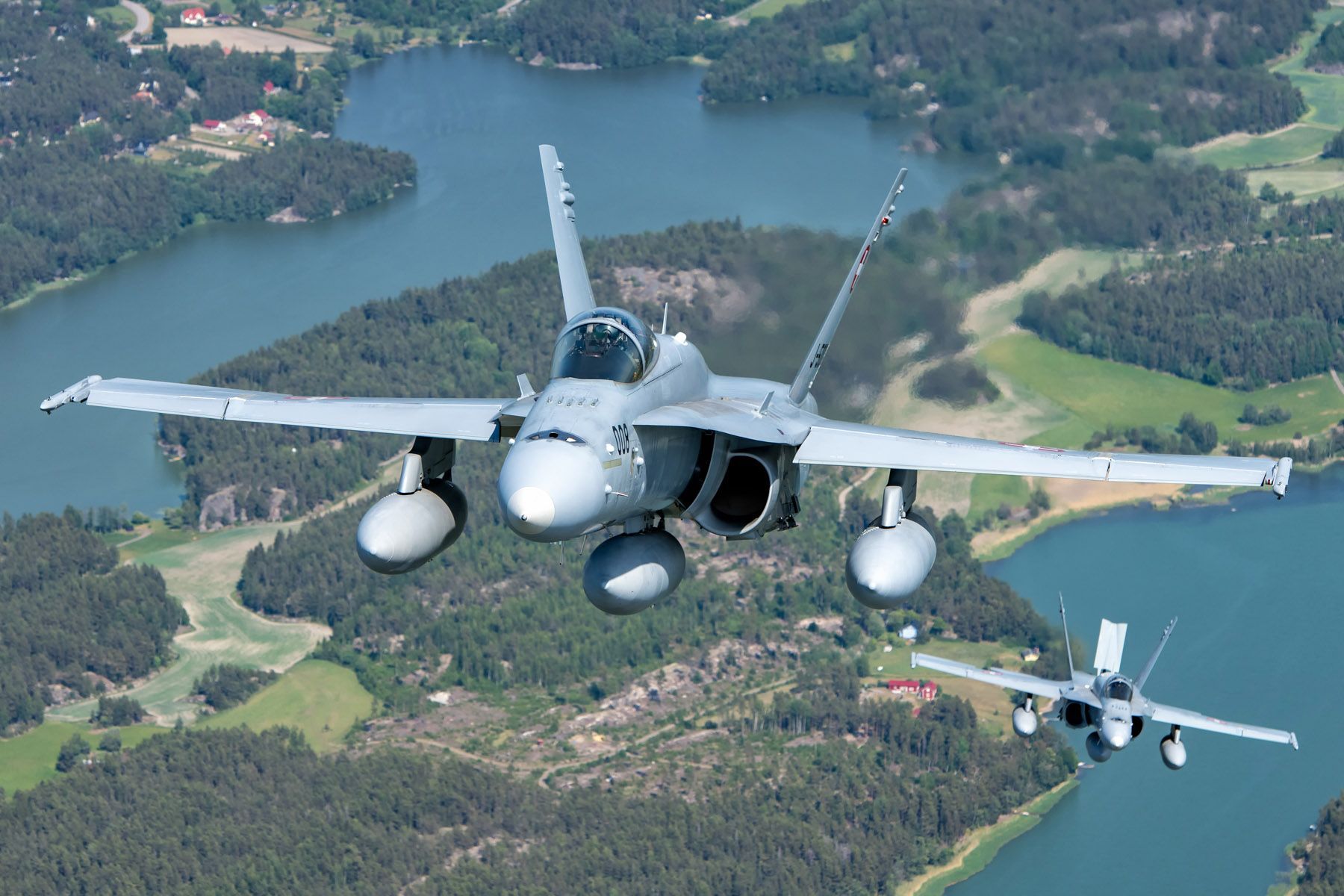
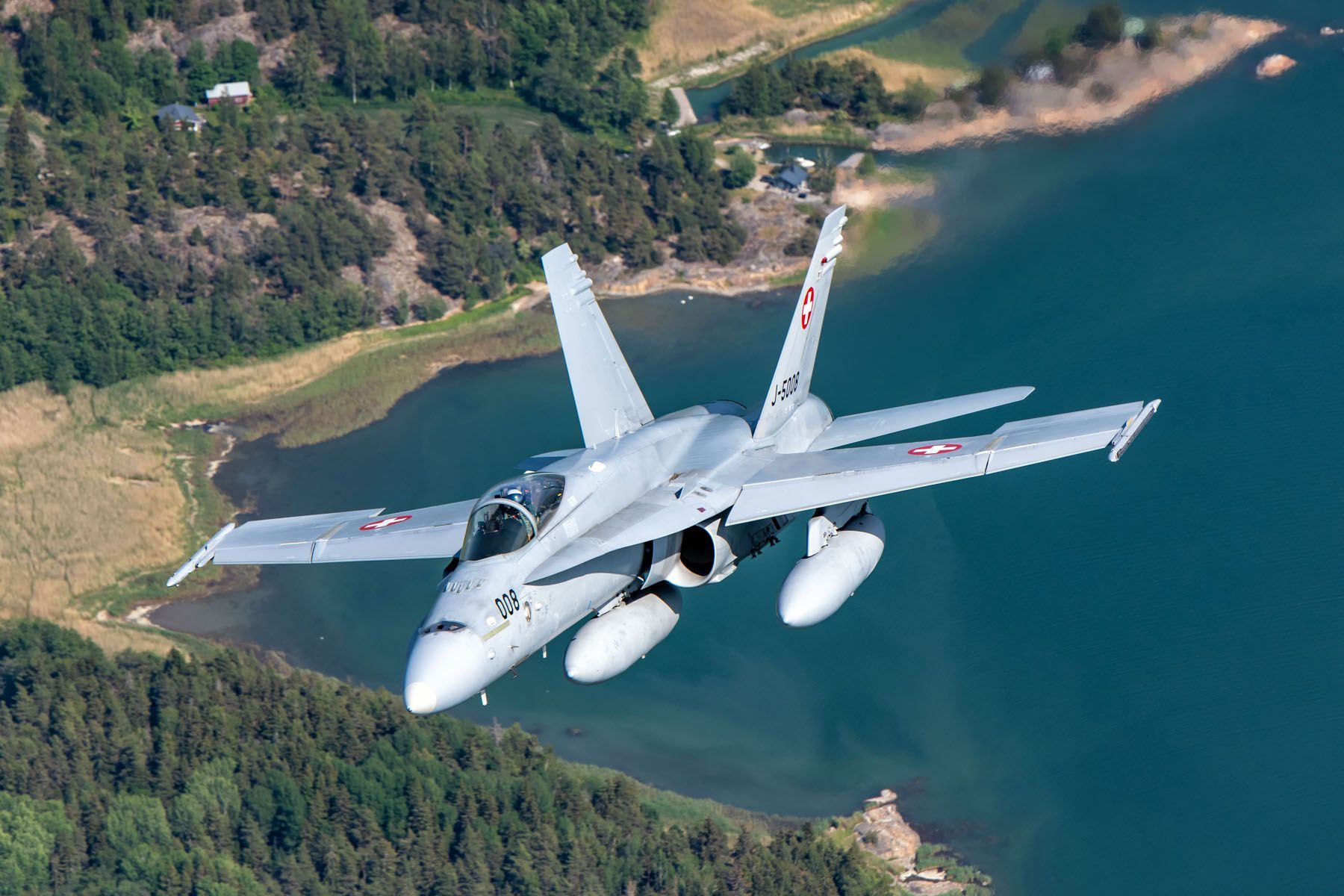
SLEP
The air force expects that part of the fleet will have reached 5,000 flight hours in 2025, which would mark the end of their lifespan. To bridge the gap until a fleet of replacement aircraft would become operational, funds were requested to the Swiss parliament to extend the Hornet’s life span to 6,000 hours. This project, worth SFR450 million, was approved in 2017.
An important part of this service life extension programme (SLEP) was a Foreign Military Sales deal with the US government, worth US$115 million. This package included: Multifunctional Information Distribution System Joint Tactical Radio Systems (MIDS JTRS) with Concurrent Multi-Net 4 (CMN-4) capability; ARC-210 GEN 5 RT-1900A(C) radios with Second Generation Anti-Jam Tactical UHF Radios for NATO(SATURN) frequency hopping; Night Vision Cueing Display (NVCD) added to the Joint Helmet Mounted Cueing System (JHMCS); CIT Automated Dependence Surveillance-Broadcast (ADS-B) out; software enhancements to the APG-73 radar; and sustainment for the ALQ-165 Airborne Self Protection Jammer (ASPJ) system. The programme also included familiarization and training for these new systems. These elements were completed in 2022, although from early 2023, the radio systems were updated further to enable encrypted technology.
Beside all these acronyms, the SLEP also comprised some old-fashioned hardware work. A structural inspection was carried out on all airframes. This however took more time than originally anticipated, mainly due to a shortage of both spares and personnel.

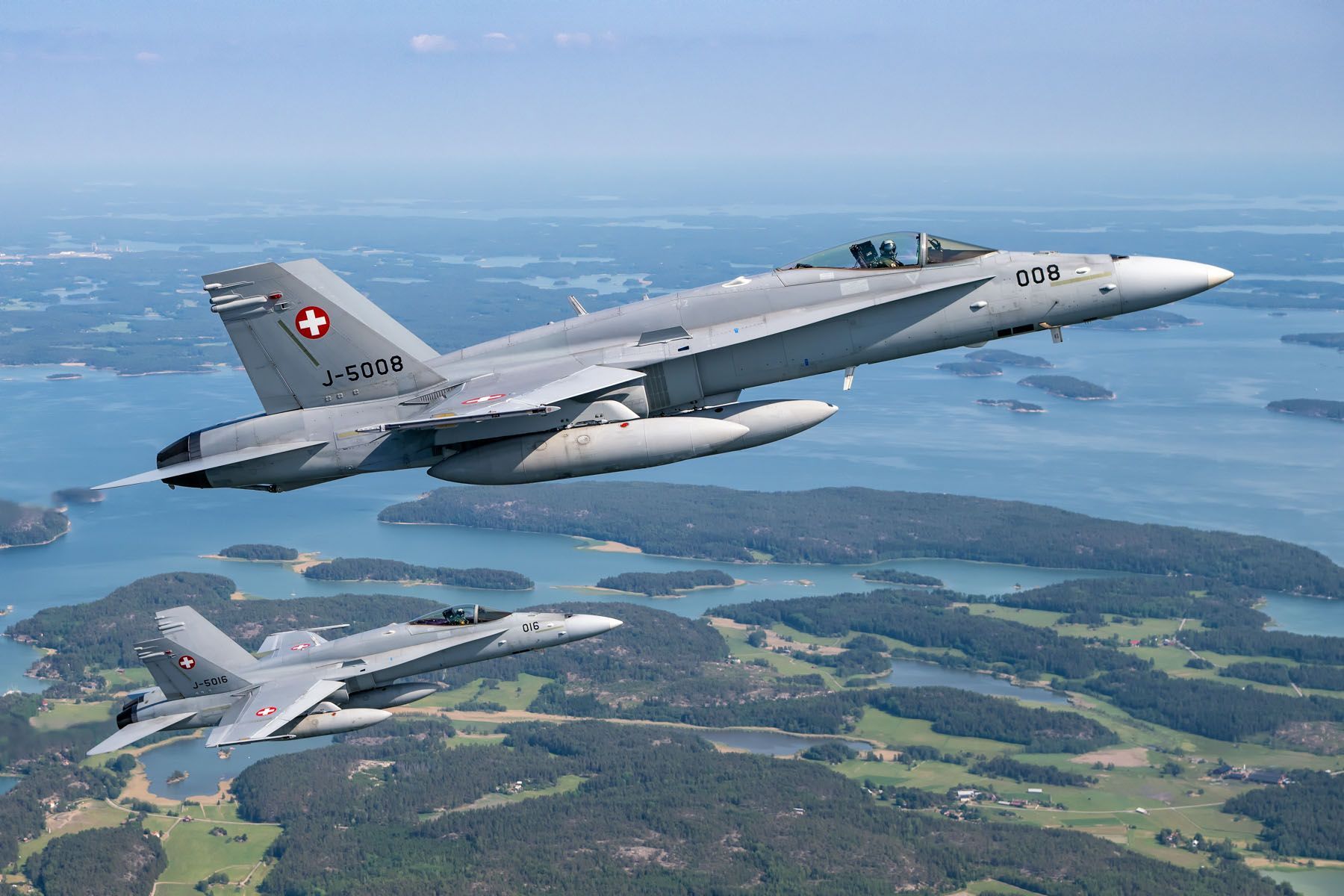
Unit changes
Some minor changes in view of the Swiss Hornet units and general operations have occurred following our earlier article. Sion is no longer an operational base, and maintained as a reserve location only. Fliegerstaffel 18 (Fighter Squadron 18), that would relocate to Sion during annual exercises and wartime, now shares its current home base Payerne with sister unit Escadrille d’Aviation 17 (Fighter Squadron 17). Both units report to Escadre d’Aviation 11 (Fighter Wing 11), controlled by Commandement Base Aérienne Payerne (Air Base Command Payerne). Fliegerstaffel 11 is still part of Fliegergeschwader 13 (Fighter Wing 13) with Flugplatz Kommando Meiringen (Air Base Command Meiringen). Fliegerstaffel 8 that was part of the same Wing has meanwhile disbanded, due to the reduced number of available F-5Es.
A milestone was reached on 31 December 2020, when the Swiss Air Force established a round-the-clock Quick Reaction Alert (QRA) with two aircraft and crews. Before, the air policing was a business hours only activity, apart from events such as the annual World Economic Forum in Davos. The QRA is located at Payerne, since Meiringen is unsuitable to host it, mainly due to limitations of the airfield’s use in wintertime.
At present, the Swiss air force has 30 Hornets operational. Three dual-seat F/A-18Ds have been lost in various accidents (J-5231 in 1998, J-5237 in 2013 and J-5235 in 2015). The latest unfortunate accident took place on 29 August 2016 when F/A-18C J-5022 impacted terrain minutes after departing Meiringen, sadly killing the pilot. The crash occurred under Instrumental Meteorological Conditions (IMC).

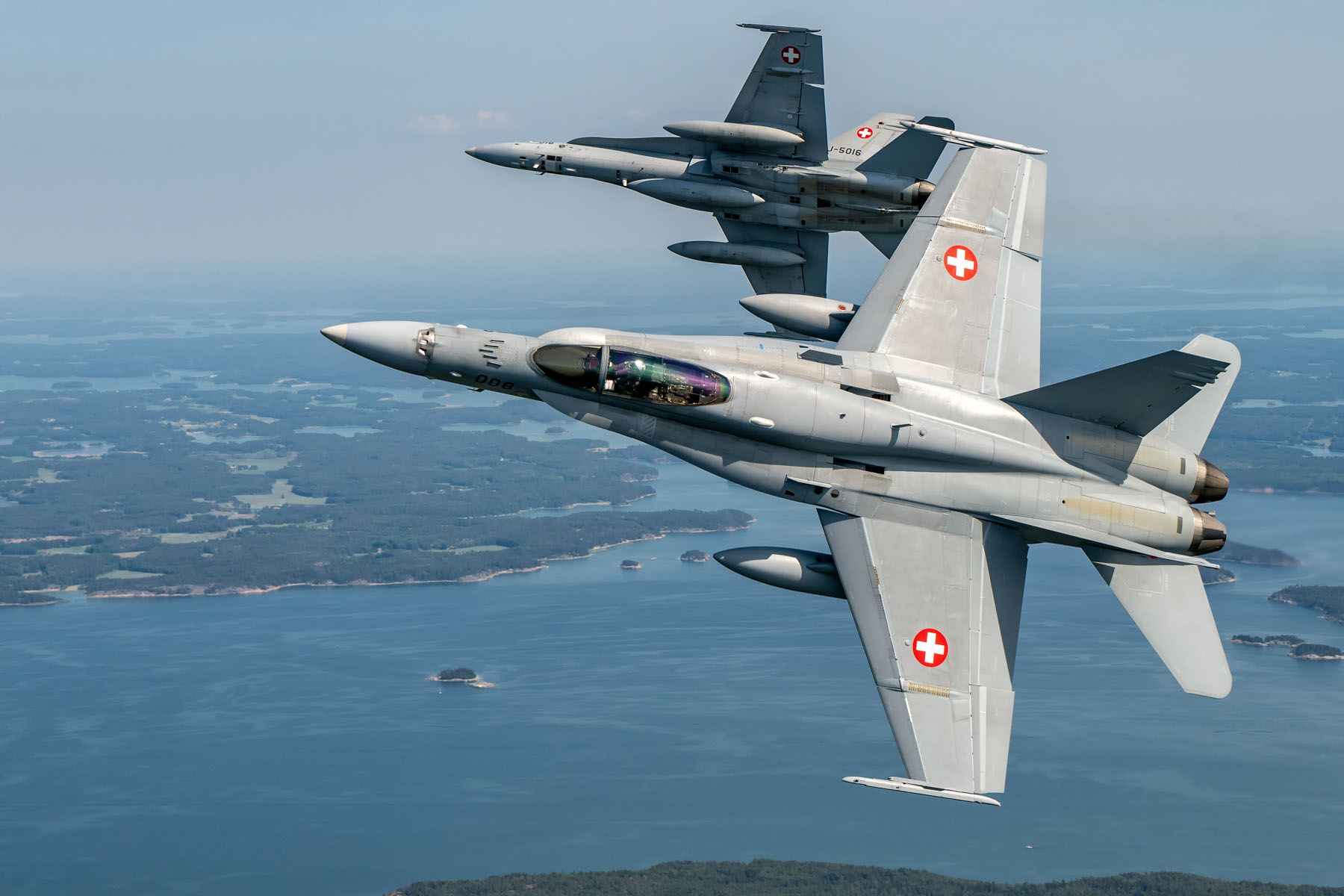
F-35
With the service life extension programma in its final stages, the Hornets have reached a level of upgrade that will allow the Swiss Air Force to fulfil their Air Policing tasks until the replacement enters the theatre.
A new type of fighter aircraft could already have been available to soar the country’s skies. However, in May 2014 the Swiss citizens vetoed an order for 22 Saab JAS39 Gripens, destined to replace the F-5E Tiger II fleet. Currently, the latter remain in service today, however in small numbers and mainly for adversary and air demonstration tasks. The Gripen cancellation resulted in the renewed search and parliamentary approval for a new fighter aircraft, now focusing on replacing the Hornets as their lifetime’s end approached as well. This quest ultimately resulted in the order for 36 Lockheed-Martin F-35A Lightning II aircraft in June 2021. The first eight will be built in the USA from 2027, the remaining 28 will be assembled at nearby FACO Cameri in Italy. As It looks now, deliveries to Payerne will start early 2028. Meiringen will welcome its F-35s from late 2029. At this base, some constructions have to be altered to host the new aircraft. The mountain hangar (cavern) needs some upgrades, for example the F-35s need a different power supply than the F/A-18s. On the western side of Meiringen, two last-chance shelters will be adapted to drive-through style. Constructions will start in 2025.
With the introduction of the F-35, the Swiss Air Force will reinstate the air-to-ground capability. Also, the new aircraft will allow aerial reconnaissance in cooperation with the new ADS15 surveillance drones.
Payerne and Meiringen may not be the only bases to witness jet operations in the future. In a local Meiringen base publication, Divisional General Peter Merz, head of the Schweizer Luftwaffe, recognized the vulnerability of having only a few operational air bases. Therefore, he expects the future occasional use of a limited number of former, now disused air bases and civilian airfields. Even the use of highway airstrips is thinkable, giving the concept of dispersion in crisis or wartime a new consideration.
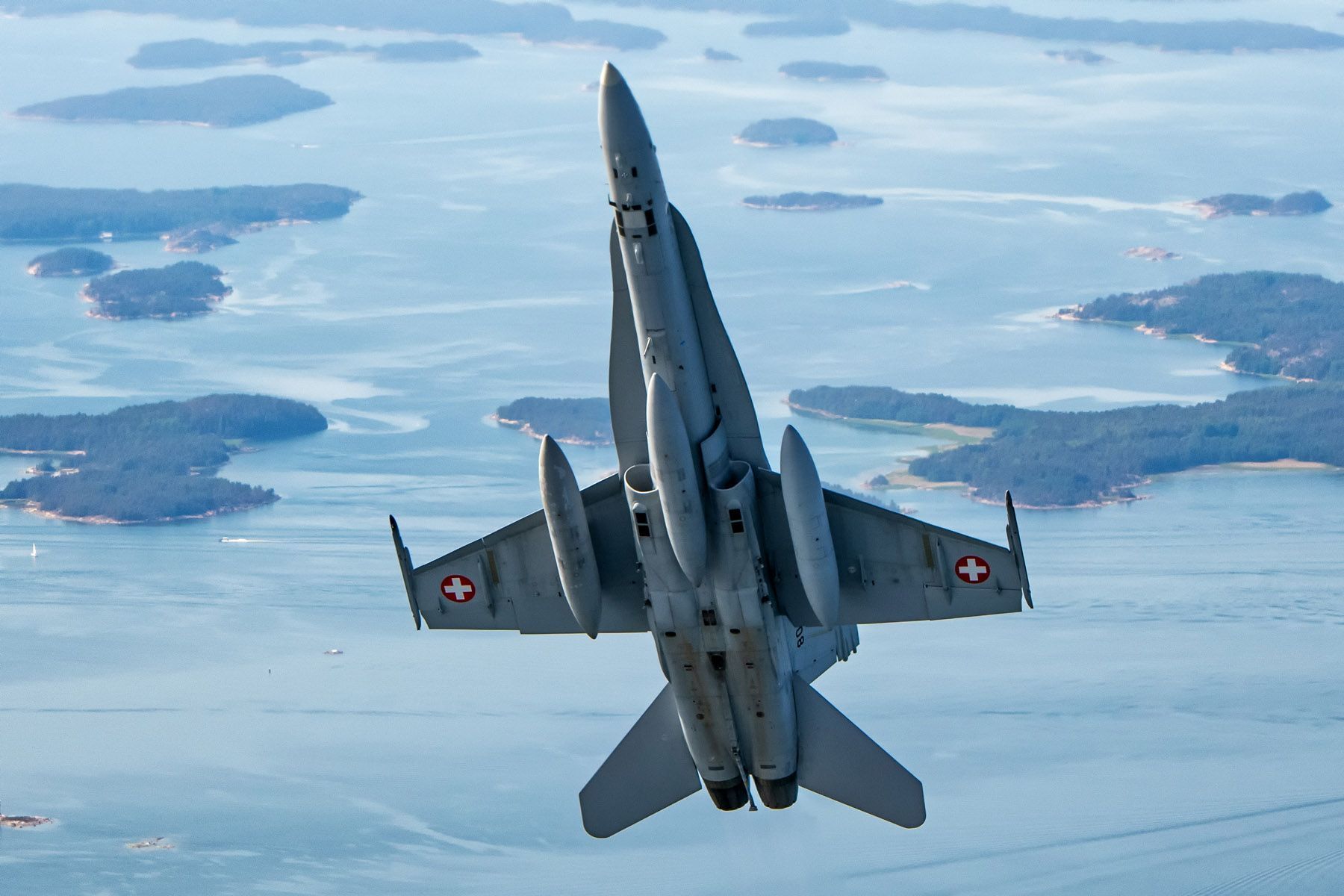
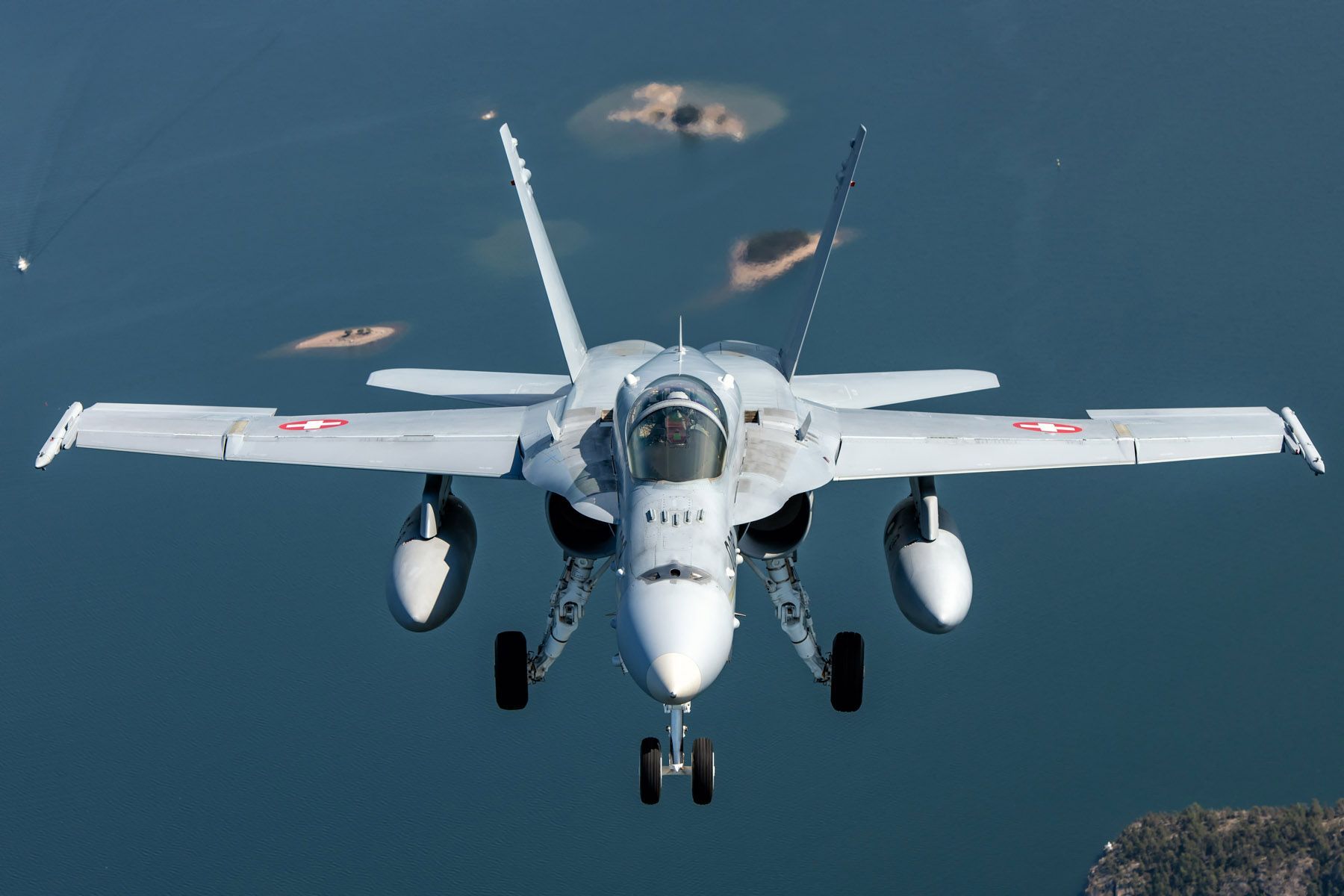
The end
From 2031, the F-35 will become the backbone of the Schweizer Luftwaffe. Until the F-35s take over, we will see the Hornets – praised for their manoeuvrability and flying characteristics that greatly match the tight Swiss airspace and the country’s mountainous terrain with its narrow valleys – be active at least for another decade. ■
